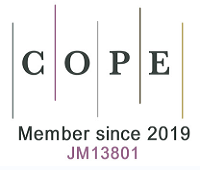Ovarian cancer recurrence: is the definition of platinum sensitivity modified by PARPi, bevacizumab or other intervening treatments? : a clinical perspective
Abstract
In view of the high risk of recurrent disease in stage III and IV ovarian cancer following primary first-line chemotherapy, a variety of maintenance and consolidation treatment strategies have been developed. These have included: radiation, intravenous or intraperitoneal chemotherapy, targeted therapies, and immunotherapy. Popular at this time is the use of Poly-adenosine ribose polymerase (PARP) inhibitors and bevacizumab as maintenance therapy. What effect these maintenance or consolidation therapies have on subsequent response to therapy, specifically platinum-based chemotherapy, is only beginning to be studied. In this manuscript, we review the impact of PARP inhibitors and bevacizumab as well as radiation and maintenance chemotherapy on subsequent response to treatment. Prior use of bevacizumab does not appear to adversely affect subsequent response to platinum-based chemotherapy or platinum-based chemotherapy with bevacizumab. Prior therapy with PARP inhibitors induces platinum resistance to subsequent platinum-based therapy and negates classic predictors of response such as platinum-free interval and breast cancer susceptibility gene (BRCA) mutational status.
Keywords
INTRODUCTION
Because of a lack of early detection methodology, most patients with ovarian cancer present with advanced-stage (stage III and IV) disease. Despite high complete response rates to surgery and primary chemotherapy, recurrence occurs in approximately 80% of these patients. Because of this very high recurrence rate, a variety of maintenance/consolidation strategies following completion of first-line chemotherapy have been tested in this patient population. Maintenance/consolidation strategies have included radiation, intravenous or intraperitoneal chemotherapy, targeted therapies, and immunotherapy[1,2].
Despite maintenance/consolidation strategies, recurrence remains high. Little is known about the interaction of maintenance/consolidation therapies and their impact on subsequent response to treatment. In the era before maintenance therapy, once a patient recurs, a major factor in choosing a second-line therapy is the patient’s potential for retreatment with a platinum compound. In 1992, Markman and Hoskins were the first to recognize the importance of defining the recurrent ovarian cancer population and proposed the definition of platinum-sensitive and platinum-resistant disease[3]. Patients that progressed on therapy had less than a partial response or recurred within 6 months were considered platinum-resistant, while patients who had a previous partial or complete response and did not require chemotherapy for 6 months were considered potentially platinum-sensitive. Subsequent definitions have subdivided patients who recurred within 6 months to those who recur between 0 and 3 months as platinum-refractory vs. 3 to 6 months as platinum-resistant[4]. Additionally, platinum-sensitive patients have been subdivided into those who recur in 6 to 12 months as partially platinum-sensitive and those who recur more than 12 months as fully platinum sensitive. Other authors feel platinum sensitivity is a continuum without a strict time cut-off[5]. The duration of time off of platinum defines the platinum-free interval.
Platinum-containing drugs act mainly to induce DNA damage which activates a DNA damage response[6]. Tumors with deficiencies in homologous recombinant DNA repair are unable to repair platinum-induced DNA damage and undergo apoptosis. Approximately 20% of patients with ovarian cancer have a hereditary germline mutation in the Fanconi Anemia-BRCA pathway, which increases the risk of ovarian cancer and increases their response to chemotherapy[7]. An additional 30% of the patients with the most common type of ovarian cancer (high-grade serous carcinoma) may also have somatic mutations in the tumor, which increases the likelihood of responding to chemotherapy and are classified as homologous recombinant deficient (HRD)[8]. In addition to the platinum-free interval, the BRCA mutational and HRD status also is associated with improved response to second-line chemotherapy. Among patients with ovarian cancer patients with BRCA mutations, Tan et al.[9] reported higher response rates (CR/PR) after second-line (70.6 vs. 38.7%; P = 0.035) and third-line (64.3 vs. 8.7%; P = 0.001) platinum-based chemotherapy compared to non-BRCA mutated patients.
Poly-adenosine ribose polymerase (PARP) enzymes play critical roles in the repair of single-strand DNA breaks (SSB) and maintenance of genomic integrity of a cell[10]. Like platinum compounds, inhibitors of poly-adenosine ribose polymerase (PARPis) have their greatest oncologic effect on tumors with germline BRCA mutations and HRD. However, even in BRCA mutated patients, response to PARP is closely related to the patient’s platinum sensitivity. Fong et al.[11] demonstrated a variable clinical benefit rate across the platinum-sensitive, resistant, and refractory subgroups (69%, 45%, and 23%, respectively). This suggests a common mechanism of drug resistance. Ang et al.[12] made the first report of the clinical outcome of post PARP inhibitor chemotherapy. Among 48 BRCA mutated patients who subsequently received post olaparib platinum-based chemotherapy, a response rate of 40% was noted. The authors suggested non-overlapping mechanisms of drug resistance. More recently, a number of authors have reported decreased response to second- and third-line platinum-based chemotherapy in BRCA mutated patients following PARPi therapy Table 1. Cecere et al. [13] studied 234 BRCA mutated patients that received olaparib after at least two platinum-based regimens. Eighty-eight percent of these patients received 2-4 platinum-based regimens. Sixty-six of these patients received post olaparib chemotherapy. These patients were stratified by their platinum-free interval. Patients with platinum-free intervals of greater than 12 months predominantly (78%) received a platinum regimen. Fifty-two percent of patients with platinum-free intervals of 6-12 months received a platinum regimen. No patients with platinum-free intervals of < 6 months received a platinum regimen. The response rates were low for all platinum-free intervals. Baert et al.[14] evaluated the rate of disease progression to third-line platinum chemotherapy among 35 BRCA mutated and non-mutated patients. Prior PARP inhibitor treatment significantly increased the frequency of disease progression by 40% vs. 9% in non-PARP inhibitor-treated controls. Frenel et al.[15] evaluated the progression-free survival following third-line platinum-based chemotherapy among BRCA mutated patients enrolled in SOLO-2. The progression-free survival to third-line platinum-based chemotherapy was significantly reduced in the olaparib-treated patients by 7 vs. 14.3 months in the placebo-treated controls. Rose et al.[16] studied BRCA mutated patients who received second- or third-line platinum-based chemotherapy. Patients who received a PARP inhibitor following first- or second-line chemotherapy had a poorer progression-free survival to second- or third-line platinum-based chemotherapy, respectively (8 months vs. 19.1 months). This study also demonstrated that there was no prognostic significance to the platinum-free interval as the progression-free survival among BRCA mutated patients with prior platinum-free intervals of 6 to 12 months, 12 to 24 months, or more than 24 months was the same. Additionally, there was no prognostic significance to BRCA mutational status as the progression-free survival of patients to subsequent platinum-based chemotherapy who were BRCA mutated or non-BRCA mutated following prior PARP inhibitor exposure was the same.
Studies of chemotherapy following PARP inhibitor therapy
| Author Year | Study design | Patients | Results |
| Ang et al.[12] 2013 | retrospective | Post olaparib platinum-based chemotherapy among BRCA mutated | 48 patients RR 40% |
| Cecere et al.[13] 2020 | retrospective | Post olaparib chemotherapy* among BRCA mutated | > 12 mo 14 platinum, 4 non-platinum RR 22% 6-12 mo 14 platinum, 13 non-platinum RR 11% |
| Baert et al.[14] 2020 | retrospective | PD on 3rd platinum-based among BRCA mutated and nonmutated | No prior PARP (n = 57): PD 9% |
| Frenel et al.[15] 2020 | SOLO-2 | PFS following 3rd platinum-based chemotherapy among BRCA mutated | Olaparib (n = 54): 7 months Placebo (n = 42): 14.3 months |
| Rose et al.[16] 2021 | retrospective | PFS following 2nd & 3rd platinum among BRCA mutated | 2nd platinum No prior PARP (n = 108) 19.1 mo 3rd platinum No prior PARP (n = 42) 18.4 mo 2nd or 3rd platinum No prior PARP (n = 150) 19.1 mo |
These findings may explain why PARP inhibitors demonstrate significant improvements in progression-free survival but not overall survival. While the mechanisms of platinum and PARP inhibitor resistance have only begun to be determined, Johnson et al.[17] did demonstrate stabilization of mutant BRCA1 protein confer PARP inhibitor and platinum resistance.
Another unresolved issue regarding PARP inhibitor utilization is when PARP inhibition therapy should be instituted. In study 19, which studied olaparib maintenance after second-line platinum-based chemotherapy, a significant improvement in overall survival was only evident when placebo-treated patients who received subsequent PARP inhibitor therapy were excluded from the analysis[18]. This implies that delayed PARP inhibition may be just as effective as immediate PARP inhibition. The conclusion of the SOLO-2 analysis abstract by Frenel et al.[15] states, “the earlier use of olaparib remains optimal”. The basis for this conclusion is uncertain. The marginal improvement in overall survival in SOLO-2 (upper limit of 95% confidence interval 1.00) is likely due to the fact only 38% of the placebo-treated patients were able to receive a PARP inhibitor[19]. More recently, the lack of overall survival benefit with niraparib in the Nova trial, which studied niraparib as second-line maintenance in BRCA mutated, HRD positive and HRD negative patients questions the importance of early PARP inhibitor therapy[20]. Although specific post clinical trial treatment was not collected in this study, it is postulated that many of the placebo-treated control patients subsequently received a PARP inhibitor because of their current greater availability commercially.
This emphasizes the need for a prospective randomized trial to compare the early use of a PARP inhibitor to the delayed use of a PARP inhibitor. In the design of this trial, one would have to think about when early PARP inhibitor therapy should occur. Numerous studies are suggested that 30% of BRCA mutated patients may not recur[21-23]. Therefore, is it reasonable from a quality of life, toxicity and cost perspectives to treat 100% of the BRCA mutated patients after first-line chemotherapy when only 70% of the patients may recur? Alternatively, would it be better to delay maintenance therapy once a patient has developed a recurrence?
As reported by Burger et al.[24], “Vascular endothelial growth factor and angiogenesis correlate directly with the extent of disease and inversely with progression-free survival and overall survival.” Several antiangiogenic targeted therapies have been studied in ovarian cancer. The most widely studied antiangiogenic agent is bevacizumab. Two studies conducted in Europe (ICON 7) and in the United States Gynecologic Oncology Group (GOG) 218 demonstrated a benefit of maintenance bevacizumab in stage IV patients[25,24]. In ICON 7, patients were defined as high risk for progression, which included stage IV disease, inoperable stage III disease, or suboptimally debulked (> 1 cm) stage III disease. The addition of bevacizumab to chemotherapy and as maintenance for 12 cycles resulted in an improvement in overall survival [39.7 months vs. 30.2 months (HR 0.78, P = 0.03)][25]. For stage IV patients in GOG 218, the addition of bevacizumab to chemotherapy and maintenance improved the median survival by 10 months (42.8 months vs. 32.6 months, HR 0.75)[26]. However, no statistical benefit was seen in an exploratory analysis using ICON 7 criteria, suboptimal stage III and IV patients vs. all other stage III patients with survivals of 42.8 months vs. 45.6 months, respectively. The benefit of bevacizumab in the ICON 7 high risk for progression subgroup included inoperable stage III patients treated with neoadjuvant chemotherapy[25]. GOG 218 did not include patients treated with neoadjuvant chemotherapy and therefore cannot confirm or refute ICON 7 findings in this population.
Whether prior exposure to bevacizumab affects the response to subsequent platinum-based chemotherapy or platinum-based chemotherapy with bevacizumab has been evaluated in three randomized trials. In GO G 213, 10% of patients in each arm had received bevacizumab[27]. Despite prior bevacizumab, patients who were randomized to retreatment with bevacizumab had an improved progression-free survival, but this was not statistically significant as they comprised only 10% of the study population [HR 0.545 (0.292-1.017)]. In contrast, in the MITO16b/MANGO-OV2/ENGOT-ov17 trial, patients who received platinum-based chemotherapy with bevacizumab as part of first-line therapy were randomized to receive a platinum-based chemotherapy doublet either carboplatin and paclitaxel, carboplatin and gemcitabine or carboplatin and pegylated liposomal doxorubicin, with or without bevacizumab[28]. The median progression-free survival to second-line platinum-based chemotherapy doublet was 8.8 months. The response rate for second-line platinum-based chemotherapy was dependent on the platinum-free interval, with different response rates for patients who progress at 6 to 12 months vs. those who progress after 12 months[4]. Table 2 is a list of platinum-based second-line chemotherapy regimens based on an increasing percentage of patients in the 6- to 12-month interval. GOG 213[27] and ICON 4[29] have a more favorable population of patients with a lower frequency of 6- to 12-month platinum-free interval patients 25% and 27%, respectively, compared to MITO16b/MANGO-OV2/ENGOT-ov17 with 35%. The MITO16b/MANGO-OV2/ENGOT-ov17 trial median progression-free survival of 8.8 months compares favorably to other platinum doublets in platinum-sensitive recurrent ovarian cancer. The median progression-free survival to second-line platinum-based chemotherapy doublet was not statistically different at 9.6 and 8.0 months, for patients who had progressed after bevacizumab or progressed on bevacizumab, respectively P = 0.8.
Chemotherapy only arms from randomized trials of platinum-based chemotherapy in platinum-sensitive ovarian cancer
| Study Invest Agent Regimen | GOG 213[27] Bev P C | ICON 4[29] None P C | MME[28] Bev P C | Calypso[30] None PLD C | Calypso[30] None P C | 02004093*[31] Pertuzumab P C & G C | AGO 2.2[32] None G C | Oceans[33] Bev G C | 00318370*[34] Farletuzumab P C | 00170677*[35] None T C |
| 6-12 mo | 25% | 27% | 35% | 35% | 36.1% | 38.7% | 39.9% | 42.1% | 53.3% | 64% |
| > 12 mo | 75% | 73% | 65% | 65% | 63.9% | 61.3% | 59.8% | 57.9% | 46.7% | 36% |
| PFS | 10.4 mo | 12 mo | 8.8 mo | 11.3 mo | 9.4 mo | 8.7 mo | 8.6 mo | 8.7 mo | 9.0 mo | 10 mo |
The AGO OVAR 2.21/NGOT- ov 18 trial, which compared carboplatin/gemcitabine/bevacizumab with carboplatin/pegylated liposomal doxorubicin/bevacizumab, allowed prior antiangiogenic therapy[36]. Prior antiangiogenic therapy was received in 47.5% of all patients, most commonly bevacizumab (87.3%). Prior antiangiogenic therapy did statistically decrease the median progression-free survival at 10.1 months (95%CI: 8.5-11.2) vs. 13.6 months (95%CI: 11.7-15.6) for carboplatin/gemcitabine/bevacizumab but not for carboplatin/pegylated liposomal doxorubicin/bevacizumab 11.3 months (95%CI: 10.1-13.8) vs. 14.4 months (95%CI: 12.3-16.8). The median overall survival was decreased more than 5 months with prior antiangiogenic therapy 25.1 months (95%CI: 19.3-27.8) vs. 30.7 months (95%CI: 27.4-36.2) for the carboplatin/gemcitabine/bevacizumab arm and by almost 10 months, 27.7 months (95%CI: 24.0-31.7) vs. 37.3 months (95%CI: 30.9-42.9) for the carboplatin/pegylated liposomal doxorubicin/bevacizumab arm, but these were not statistically significant.
Thirty-one percent of patients in each arm were in the 6-12 months platinum-free interval, so this progression-free survival is consistent with prior studies Table 2 and does not suggest any negative impact of prior antiangiogenic therapy.
RADIATION CONSOLIDATION
Ovarian cancer is radiosensitive, but the potential for metastasis throughout the abdominal cavity requires whole abdominal radiation. While bulky residual disease is difficult to treat, it was believed that patients who had undergone cytoreductive surgery and platinum-based chemotherapy, with the potential for further chemical cytoreduction, consolidation with whole abdominal radiation might be more effective.
Lastly, although Intraperitoneal P32 was not found to be an effective consolidation therapy for stage III ovarian cancer patients after negative second-look laparotomy, it did not adversely affect overall survival[41].
MAINTENANCE CHEMOTHERAPY
In 2003, Markman reported the results of the SWOG/GOG 178 trial, which demonstrated that following first-line chemotherapy, patients randomized to 12 cycles of paclitaxel vs. three cycles of paclitaxel had an improved progression-free survival (28 months vs. 21 months P < 0.005)[42]. Once this progression-free survival improvement was reported, patients in the 3 cycle arm were offered additional therapy. Possibly, as a result of this delayed crossover, there was no difference in overall survival. Conte et al.[43] performed a trial of six cycles of paclitaxel vs. observation following primary chemotherapy. No difference in overall survival was noted. The Gynecological Oncology Group performed a larger confirmatory trial (GOG 212) comparing 12 cycles of paclitaxel vs. 12 cycles of polyglutamate paclitaxel (Xyotax) vs. observation[44]. No difference in overall survival was noted at 51.3 months, 60.0 months, and 54.8 months for paclitaxel, Xyotax, and observation, respectively. Other studies have used topotecan[45,46] or epirubicin[47] as maintenance therapy vs. observation, but no difference in overall survival has been noted. In summary, although multiple chemotherapy agents have been studied as maintenance therapy and ovarian cancer, it is clear that they have not improved overall survival. When non-platinum maintenance chemotherapy was utilized, since patients were off platinum, the platinum-free interval was not affected, and anecdotally subsequent chemotherapy was not adversely affected by non-platinum maintenance chemotherapy.
In summary, patients with advanced-stage ovarian cancer have high responses to primary therapy but have a high recurrence rate. Multiple studies have looked at the use of maintenance or consolidation therapy to prevent recurrence. Currently, both the use of bevacizumab and PARP inhibitors are favored as possible maintenance therapies. Prior use of bevacizumab does not appear to adversely affect subsequent response to platinum-based chemotherapy or platinum-based chemotherapy with bevacizumab. Since the response to PARP inhibitors is related to platinum sensitivity, it suggests a common mechanism of resistance. Prior therapy with PARP inhibitors induces platinum resistance to subsequent platinum-based therapy and negates classic predictors of response such as platinum-free interval and BRCA mutational status. Randomized trials are needed to determine the best time to initiate PARP inhibitor therapy.
DECLARATIONS
Author contributionsThe author contributed solely to the article.
Availability of data and materialsNot applicable.
Financial support and sponsorshipNone.
Conflicts of interestThe author declared that there are no conflicts of interest.
Ethical approval and consent to participateNot applicable.
Consent for publicationNot applicable.
Copyright© The Author(s) 2022.
REFERENCES
1. Gadducci A, Cosio S, Conte PF, Genazzani AR. Consolidation and maintenance treatments for patients with advanced epithelial ovarian cancer in complete response after first-line chemotherapy: a review of the literature. Crit Rev Oncol Hematol 2005;55:153-66.
2. Hirte H, Yao X, Ferguson SE, May T, Elit L. Consolidation or maintenance systemic therapy for newly diagnosed stage II, III, or IV epithelial ovary, fallopian tube, or primary peritoneal carcinoma: a systematic review. Crit Rev Oncol Hematol 2021;162:103336.
3. Markman M, Hoskins W. Responses to salvage chemotherapy in ovarian cancer: a critical need for precise definitions of the treated population. J Clin Oncol 1992;10:513-4.
4. Friedlander M, Trimble E, Tinker A, et al. Gynecologic Cancer InterGroup. Clinical trials in recurrent ovarian cancer. Int J Gynecol Cancer 2011;21:771-5.
5. Claussen C, Rody A, Hanker L. Treatment of recurrent epithelial ovarian cancer. Geburtshilfe Frauenheilkd 2020;80:1195-204.
6. Rottenberg S, Disler C, Perego P. The rediscovery of platinum-based cancer therapy. Nat Rev Cancer 2021;21:37-50.
7. Pennington KP, Walsh T, Harrell MI, et al. Germline and somatic mutations in homologous recombination genes predict platinum response and survival in ovarian, fallopian tube, and peritoneal carcinomas. Clin Cancer Res 2014;20:764-75.
8. Genome Atlas Research Network. Integrated genomic analyses of ovarian carcinoma. Nature 2011;474:609-15.
9. Tan DS, Rothermundt C, Thomas K, et al. “BRCAness” syndrome in ovarian cancer: a case-control study describing the clinical features and outcome of patients with epithelial ovarian cancer associated with BRCA1 and BRCA2 mutations. J Clin Oncol 2008;26:5530-6.
10. Lee EK, Matulonis UA. Emerging drugs for the treatment of ovarian cancer: a focused review of PARP inhibitors. Expert Opin Emerg Drugs 2020;25:165-88.
11. Fong PC, Yap TA, Boss DS, et al. Poly(ADP)-ribose polymerase inhibition: frequent durable responses in BRCA carrier ovarian cancer correlating with platinum-free interval. J Clin Oncol 2010;28:2512-9.
12. Ang JE, Gourley C, Powell CB, et al. Efficacy of chemotherapy in BRCA1/2 mutation carrier ovarian cancer in the setting of PARP inhibitor resistance: a multi-institutional study. Clin Cancer Res 2013;19:5485-93.
13. Cecere SC, Giannone G, Salutari V, et al. Olaparib as maintenance therapy in patients with BRCA 1-2 mutated recurrent platinum sensitive ovarian cancer: real world data and post progression outcome. Gynecol Oncol 2020;156:38-44.
14. Baert T, Ataseven B, Bommert M, et al. 828P Expected observed response to platinum-based chemotherapy after poly (ADP-ribose) polymerase inhibitor treatment for relapsed ovarian cancer. Annals of Oncology 2020;31:S624.
15. Frenel J, Kim J, Berton-rigaud D, et al. 813MO Efficacy of subsequent chemotherapy for patients with BRCA1/2 mutated platinum-sensitive recurrent epithelial ovarian cancer (EOC) progressing on olaparib vs placebo: the SOLO2/ENGOT Ov-21 trial. Annals of Oncology 2020;31:S615.
16. Rose PG, Yao M, Chambers LM, et al. PARP inhibitors decrease response to subsequent platinum-based chemotherapy in patients with BRCA mutated ovarian cancer. Anticancer Drugs 2021;32:1086-92.
17. Johnson N, Johnson SF, Yao W, et al. Stabilization of mutant BRCA1 protein confers PARP inhibitor and platinum resistance. Proc Natl Acad Sci U S A 2013;110:17041-6.
18. Matulonis UA, Harter P, Gourley C, et al. Olaparib maintenance therapy in patients with platinum-sensitive, relapsed serous ovarian cancer and a BRCA mutation: overall survival adjusted for postprogression poly (adenosine diphosphate ribose) polymerase inhibitor therapy. Cancer 2016;122:1844-52.
19. Poveda A, Floquet A, Ledermann JA, et al. Olaparib tablets as maintenance therapy in patients with platinum-sensitive relapsed ovarian cancer and a BRCA1/2 mutation (SOLO2/ENGOT-Ov21): a final analysis of a double-blind, randomised, placebo-controlled, phase 3 trial. The Lancet Oncology 2021;22:620-31.
20. Matulonis U, Herrstedt J, Oza A, et al. Long-term safety and secondary efficacy endpoints in the ENGOT-OV16/NOVA phase III trial of niraparib in recurrent ovarian cancer. Gynecologic Oncology 2021;162:S24-5.
21. Bookman MA, Tyczynski JE, Espirito JL, Wilson TW, Fernandes AW. Impact of primary platinum-free interval and BRCA1/2 mutation status on treatment and survival in patients with recurrent ovarian cancer. Gynecol Oncol 2017;146:58-63.
22. Jorge S, Swisher EM, Norquist BM, et al. Patterns and duration of primary and recurrent treatment in ovarian cancer patients with germline BRCA mutations. Gynecol Oncol Rep 2019;29:113-7.
23. Rose PG, Yao M, Chambers LM, Mei L, Le P. The overtreatment and cost effectiveness of primary versus secondary maintenance therapy with poly-adenosine ribose phosphate inhibitors (PARPi) for epithelial ovarian cancer (EOC). Gynecol Obstet 2021;11(9):570.
24. Burger RA, Brady MF, Bookman MA, et al. Gynecologic Oncology Group. Incorporation of bevacizumab in the primary treatment of ovarian cancer. N Engl J Med 2011;365:2473-83.
25. Oza AM, Cook AD, Pfisterer J, et al. Standard chemotherapy with or without bevacizumab for women with newly diagnosed ovarian cancer (ICON7): overall survival results of a phase 3 randomised trial. The Lancet Oncology 2015;16:928-36.
26. Tewari KS, Burger RA, Enserro D, et al. Final overall survival of a randomized trial of bevacizumab for primary treatment of ovarian cancer. J Clin Oncol 2019;37:2317-28.
27. Coleman RL, Brady MF, Herzog TJ, et al. Bevacizumab and paclitaxel-carboplatin chemotherapy and secondary cytoreduction in recurrent, platinum-sensitive ovarian cancer (NRG Oncology/Gynecologic Oncology Group study GOG-0213): a multicentre, open-label, randomised, phase 3 trial. The Lancet Oncology 2017;18:779-91.
28. Pignata S, Lorusso D, Joly F, et al. Carboplatin-based doublet plus bevacizumab beyond progression versus carboplatin-based doublet alone in patients with platinum-sensitive ovarian cancer: a randomised, phase 3 trial. The Lancet Oncology 2021;22:267-76.
29. The ICON and AGO Collaborators. Paclitaxel plus platinum-based chemotherapy versus conventional platinum-based chemotherapy in women with relapsed ovarian cancer: the ICON4/AGO-OVAR-2.2 trial. The Lancet 2003;361:2099-106.
30. Pujade-Lauraine E, Wagner U, Aavall-Lundqvist E, et al. Pegylated liposomal doxorubicin and carboplatin compared with paclitaxel and carboplatin for patients with platinum-sensitive ovarian cancer in late relapse. J Clin Oncol 2010;28:3323-9.
31. Kaye SB, Poole CJ, Dańska-Bidzińska A, et al. A randomized phase II study evaluating the combination of carboplatin-based chemotherapy with pertuzumab versus carboplatin-based therapy alone in patients with relapsed, platinum-sensitive ovarian cancer. Ann Oncol 2013;24:145-52.
32. Pfisterer J, Plante M, Vergote I, et al. AGO-OVAR. , NCIC CTG., EORTC GCG. Gemcitabine plus carboplatin compared with carboplatin in patients with platinum-sensitive recurrent ovarian cancer: an intergroup trial of the AGO-OVAR, the NCIC CTG, and the EORTC GCG. J Clin Oncol 2006;24:4699-707.
33. Aghajanian C, Blank SV, Goff BA, et al. OCEANS: a randomized, double-blind, placebo-controlled phase III trial of chemotherapy with or without bevacizumab in patients with platinum-sensitive recurrent epithelial ovarian, primary peritoneal, or fallopian tube cancer. J Clin Oncol 2012;30:2039-45.
34. Armstrong DK, White AJ, Weil SC, Phillips M, Coleman RL. Farletuzumab (a monoclonal antibody against folate receptor alpha) in relapsed platinum-sensitive ovarian cancer. Gynecol Oncol 2013;129:452-8.
35. Sehouli J, Chekerov R, Reinthaller A, et al. Topotecan plus carboplatin versus standard therapy with paclitaxel plus carboplatin (PC) or gemcitabine plus carboplatin (GC) or pegylated liposomal doxorubicin plus carboplatin (PLDC): a randomized phase III trial of the NOGGO-AGO-Study Group-AGO Austria and GEICO-ENGOT-GCIG intergroup study (HECTOR). Ann Oncol 2016;27:2236-41.
36. Pfisterer J, Shannon CM, Baumann K, et al. Bevacizumab and platinum-based combinations for recurrent ovarian cancer: a randomised, open-label, phase 3 trial. The Lancet Oncology 2020;21:699-709.
37. Lawton F, Luesley D, Blackledge G, et al. A randomized trial comparing whole abdominal radiotherapy with chemotherapy following cisplatinum cytoreduction in epithelial ovarian cancer. West midlands ovarian cancer group trial II. Clinical Oncology 1990;2:4-9.
38. Lambert HE, Rustin GJ, Gregory WM, Nelstrop AE. A randomized trial comparing single-agent carboplatin with carboplatin followed by radiotherapy for advanced ovarian cancer: a North Thames Ovary Group study. J Clin Oncol 1993;11:440-8.
39. B; Swedish-Norgewian Ovarian Cancer Study Group. Consolidation treatment of advanced (FIGO stage III) ovarian carcinoma in complete surgical remission after induction chemotherapy: a randomized, controlled, clinical trial comparing whole abdominal radiotherapy, chemotherapy, and no further treatment. Int J Gynecol Cancer 2003;13:278-86.
40. Louie KG, Behrens BC, Kinsella TJ, et al. Radiation survival parameters of antineoplastic drug-sensitive and -resistant human ovarian cancer cell lines and their modification by buthionine sulfoximine. Cancer Res 1985;45:2110-5. PMID: 3986765.
41. Varia MA, Stehman FB, Bundy BN, et al. Gynecologic Oncology Group. Intraperitoneal radioactive phosphorus (32P) versus observation after negative second-look laparotomy for stage III ovarian carcinoma: a randomized trial of the Gynecologic Oncology Group. J Clin Oncol 2003;21:2849-55.
42. Markman M, Liu PY, Wilczynski S, et al. Southwest Oncology Group. , Gynecologic Oncology Group. Phase III randomized trial of 12 versus 3 months of maintenance paclitaxel in patients with advanced ovarian cancer after complete response to platinum and paclitaxel-based chemotherapy: a Southwest Oncology Group and Gynecologic Oncology Group trial. J Clin Oncol 2003;21:2460-5.
43. Pecorelli S, Favalli G, Gadducci A, et al. After 6 Italian Cooperative Group. Phase III trial of observation versus six courses of paclitaxel in patients with advanced epithelial ovarian cancer in complete response after six courses of paclitaxel/platinum-based chemotherapy: final results of the After-6 protocol 1. J Clin Oncol 2009;27:4642-8.
44. Copeland LJ, Brady MF, Burger RA, et al. A randomized phase III trial of maintenance therapy comparing 12 monthly cycles of single agent paclitaxel or paclitaxel poliglumex (CT-2103, IND#70177)(PP), versus surveillance (S) in women with advanced ovarian/fallopian tube/peritoneal cancer (O/PC/FT) who achieved a complete clinical response (CCR) following first-line platinum-taxane therapy: An NRG Oncology study. Society Gynecologic Oncology Annual Meeting, National Harbor, Washington DC March 13, 2017.
45. De Placido S, Scambia G, Di Vagno G, et al. Topotecan compared with no therapy after response to surgery and carboplatin/paclitaxel in patients with ovarian cancer: Multicenter Italian Trials in Ovarian Cancer (MITO-1) randomized study. J Clin Oncol 2004;22:2635-42.
46. Pfisterer J, Weber B, Reuss A, et al. AGO-OVAR. , GINECO. Randomized phase III trial of topotecan following carboplatin and paclitaxel in first-line treatment of advanced ovarian cancer: a gynecologic cancer intergroup trial of the AGO-OVAR and GINECO. J Natl Cancer Inst 2006;98:1036-45.
Cite This Article
How to Cite
Download Citation
Export Citation File:
Type of Import
Tips on Downloading Citation
Citation Manager File Format
Type of Import
Direct Import: When the Direct Import option is selected (the default state), a dialogue box will give you the option to Save or Open the downloaded citation data. Choosing Open will either launch your citation manager or give you a choice of applications with which to use the metadata. The Save option saves the file locally for later use.
Indirect Import: When the Indirect Import option is selected, the metadata is displayed and may be copied and pasted as needed.



















Comments
Comments must be written in English. Spam, offensive content, impersonation, and private information will not be permitted. If any comment is reported and identified as inappropriate content by OAE staff, the comment will be removed without notice. If you have any queries or need any help, please contact us at [email protected].